These historiated plates evoke a subject of modern history that is little used, especially in France, unlike Joan of Arc or Napoleon: the Boer War. This conflict pitted the British against the Boers, descendants of the first Dutch settlers, in South Africa during two successive wars from 1880 to 1902. The twelve illustrations on the plates, all different, are not strictly speaking a historical account but present in a rather sympathetic light the ingenuity of the Boer fighters.
The first of them represents President Paul Kruger on horseback, historical military leader of the Boers and president from 1883 to 1902.
The subject matter is in keeping with the period of creation of these plates, all bearing the very graphic signature of the manufacturer, the intertwined C and M, used at the end of the 19th and very beginning of the 20th century.
The decorations are very neat in tones ranging from deep brown to bistre on a creamy white background. The main character(s) in the foreground are the darkest, the other characters in a lighter tone but very present and the background is very light so as to highlight the subjects. Each decoration is covered with two clearly legible signatures, that of the engraver Charles Edmond Griffiths born in Creil of English parents and known by his artist name Charles Hamlet and that of the decorator Frédéric Bourdin of whom we know very little apart from the fact that he was born in the 19th century and died in the 20th...
The edge is decorated with a verdigris frieze divided into four sectors containing foliage. The four sectors are separated by cartouches, two of which contain a capital B whose meaning we do not know, nor that of the coat of arms containing a strange naval anchor. The lower cartouche is very in keeping with the subject because it contains crossed rifle butts.
The plates presented are in very good condition without cracks or breaches. Only three of them (1, 3, 7) have some "freckles" on the back which can, if we pay attention, show through on the front, but surprisingly exactly in the color of the decoration, therefore almost invisible. The enamel is very shiny.
The irregularity of the pile attests to a very artisanal manufacture!
Do not hesitate, you are in the presence of a rare set which will amaze your guests at dessert time, unless, as a passionate historian or South African citizen, you prefer to slip them into your display case...


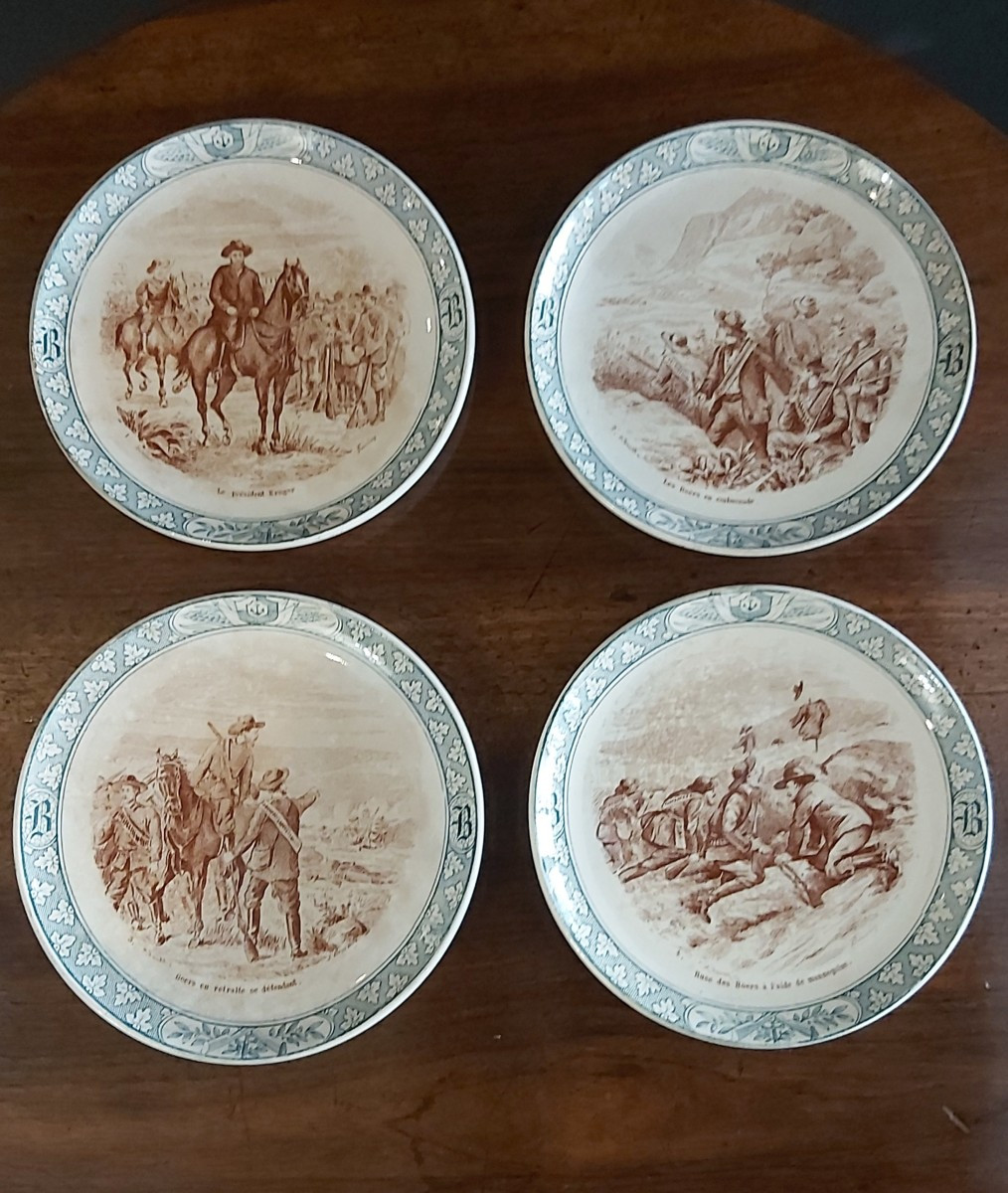
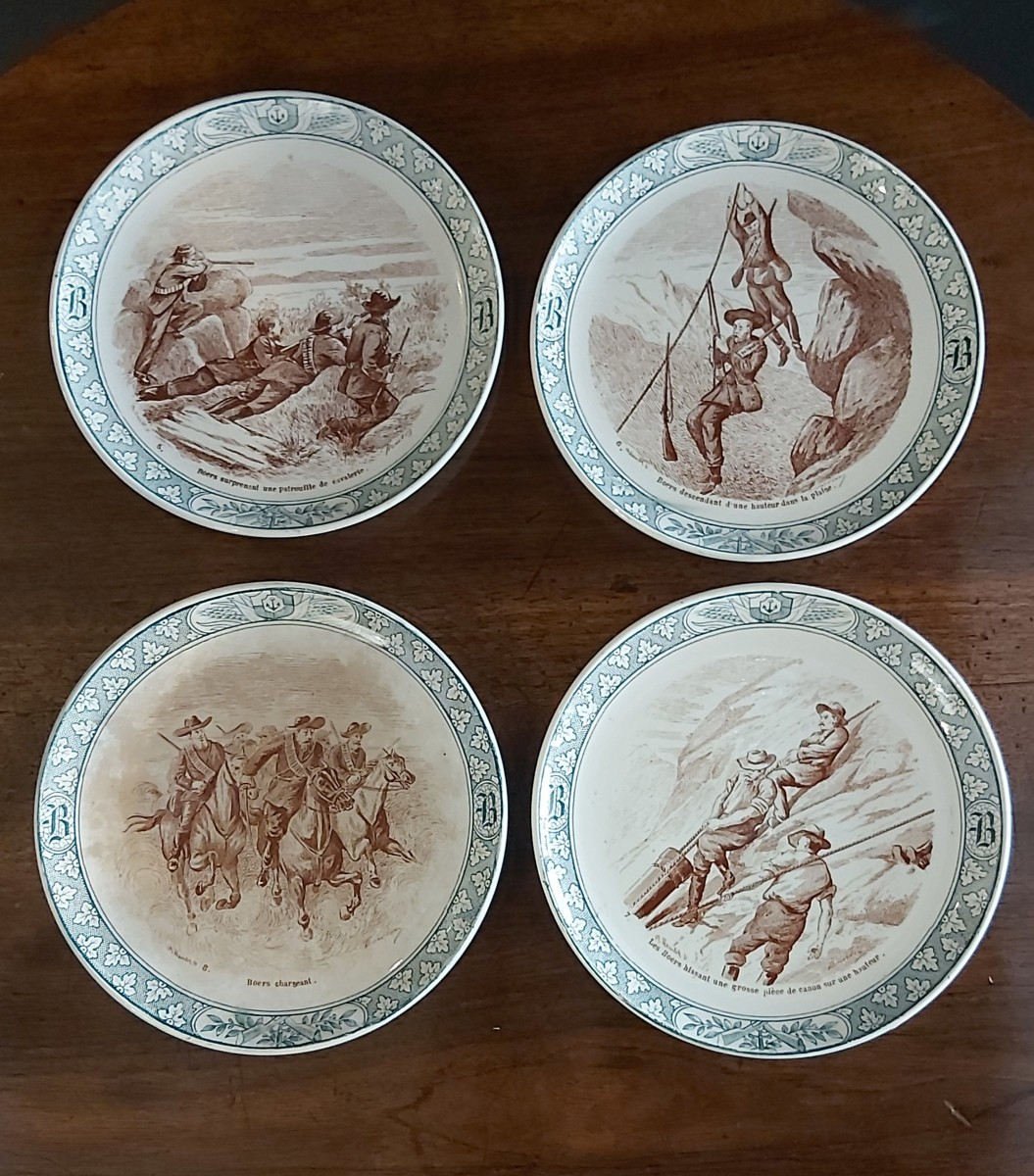
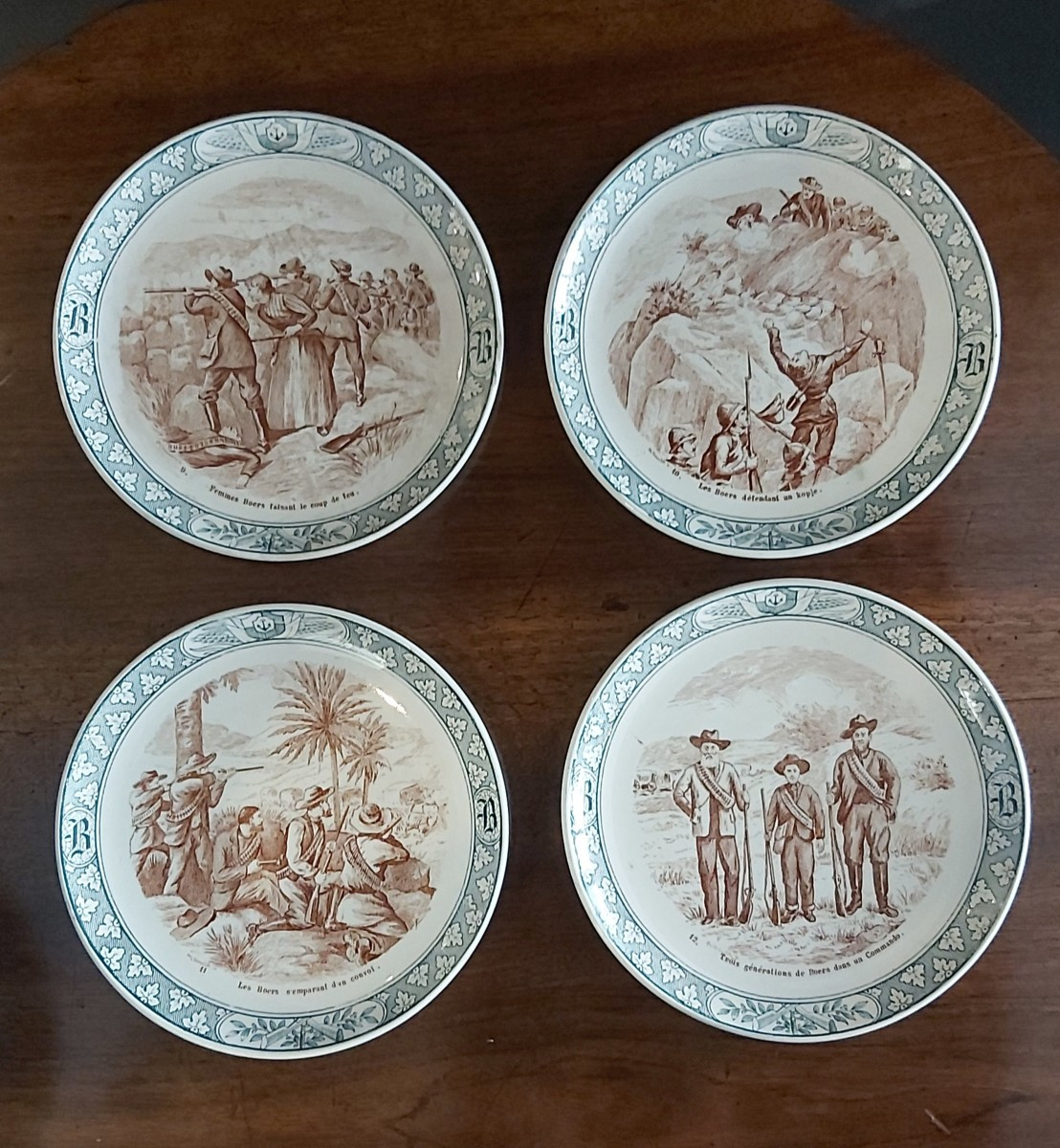
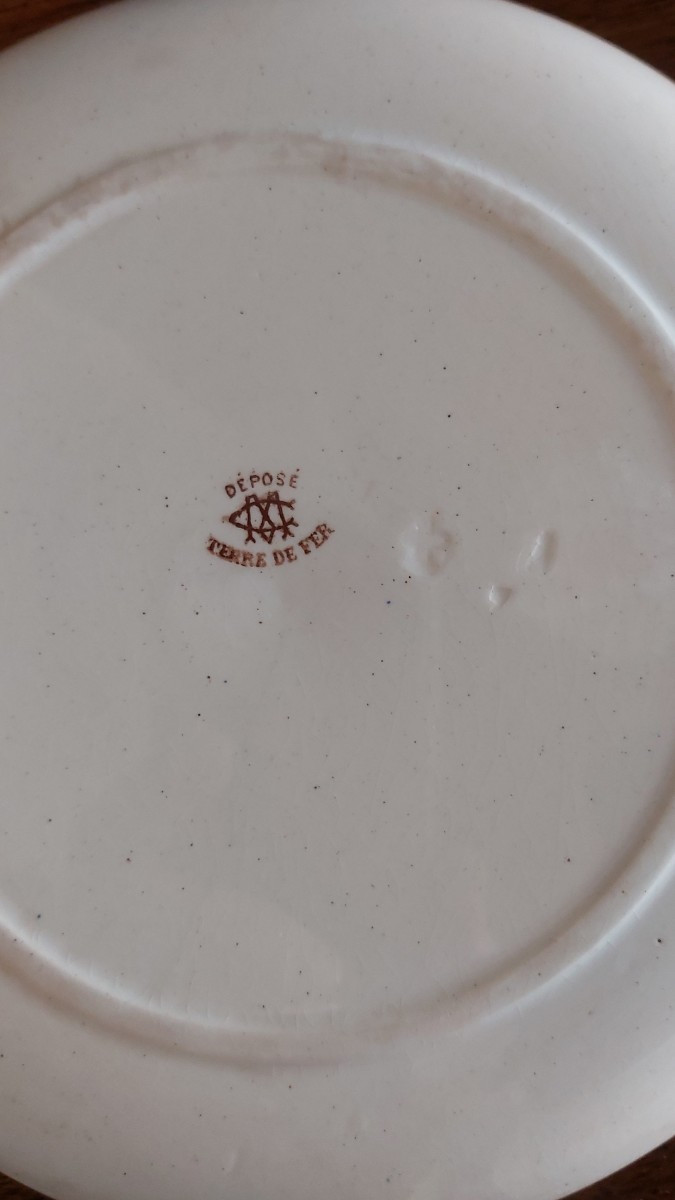
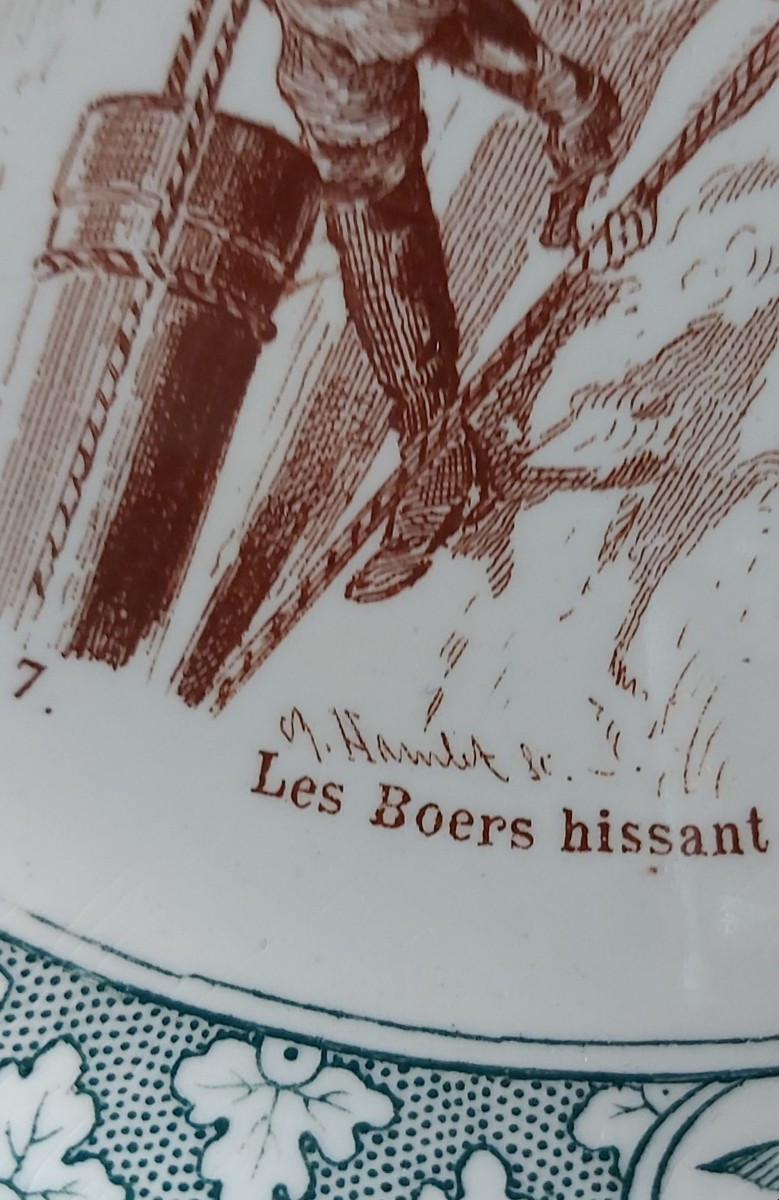
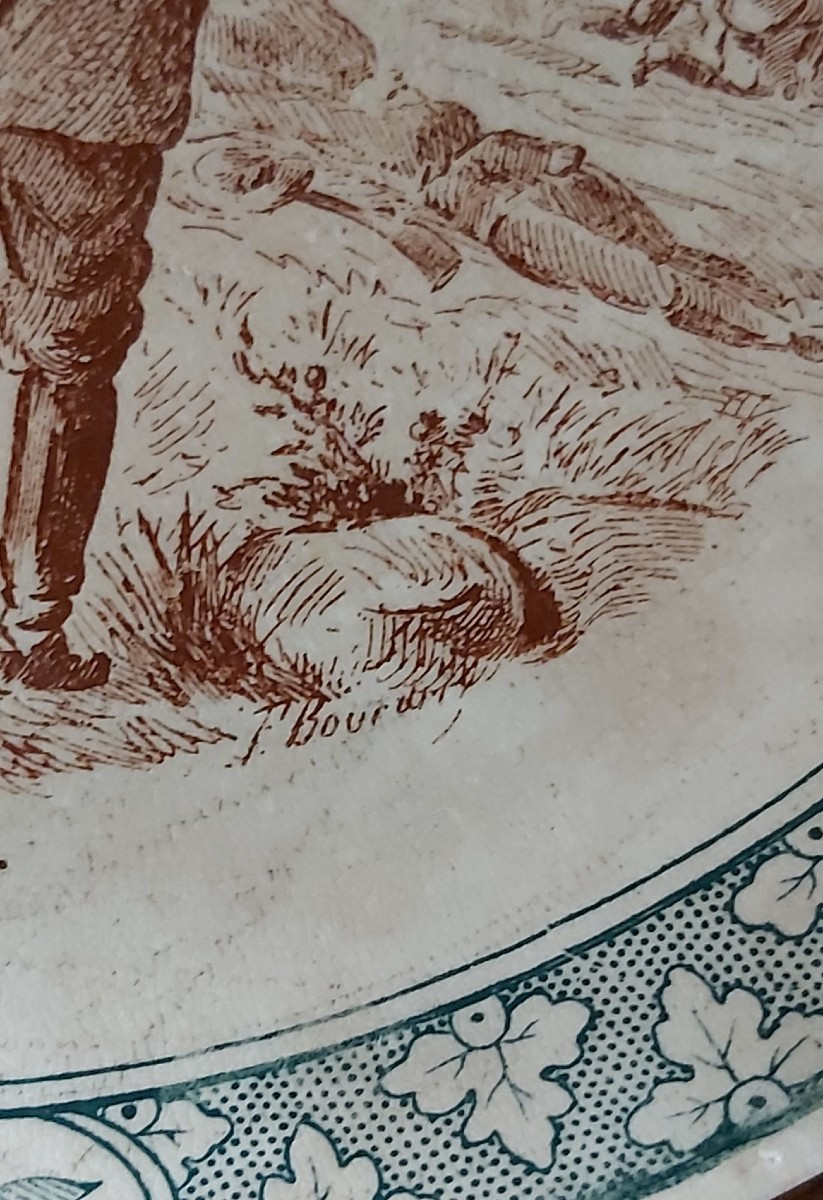
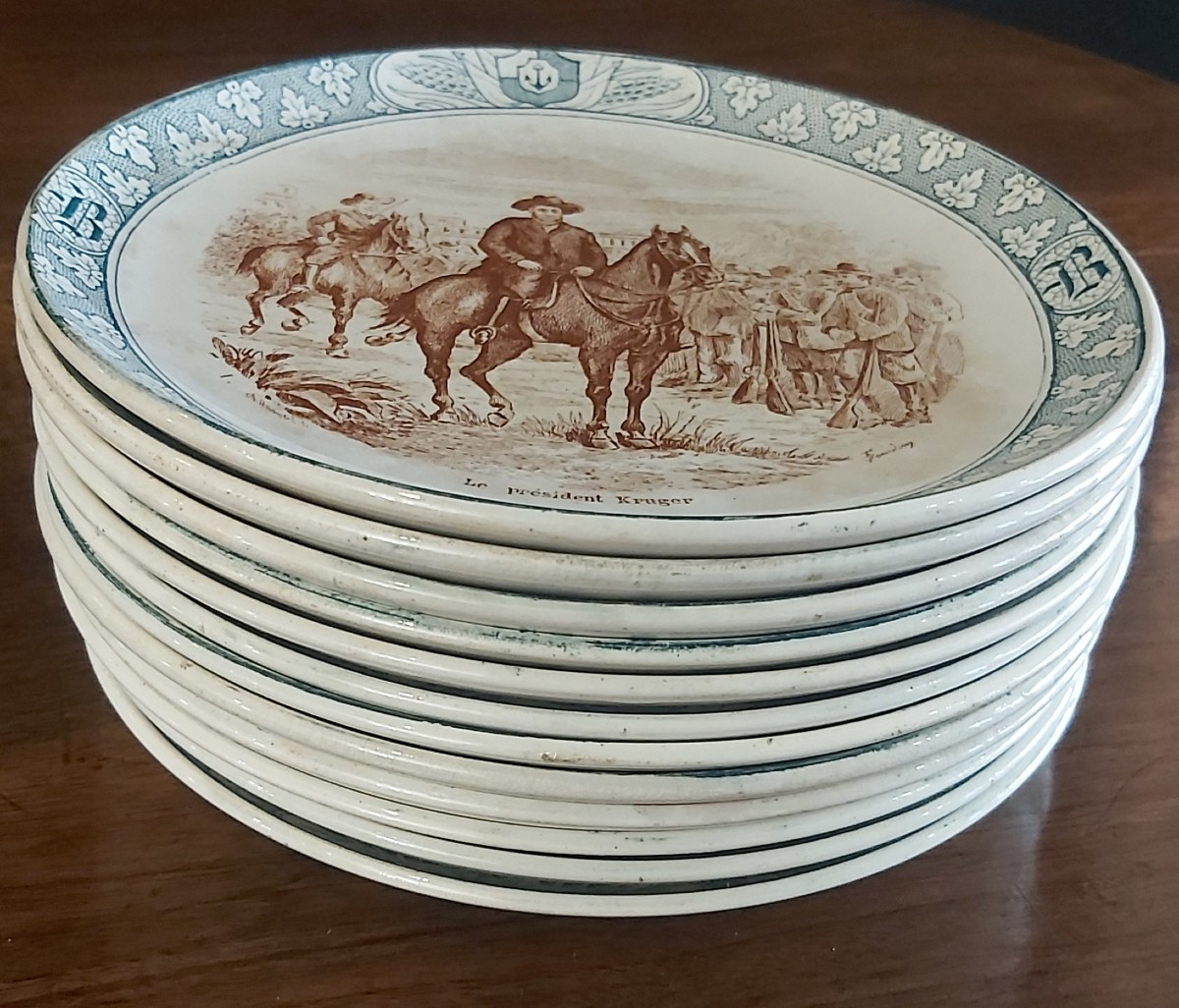
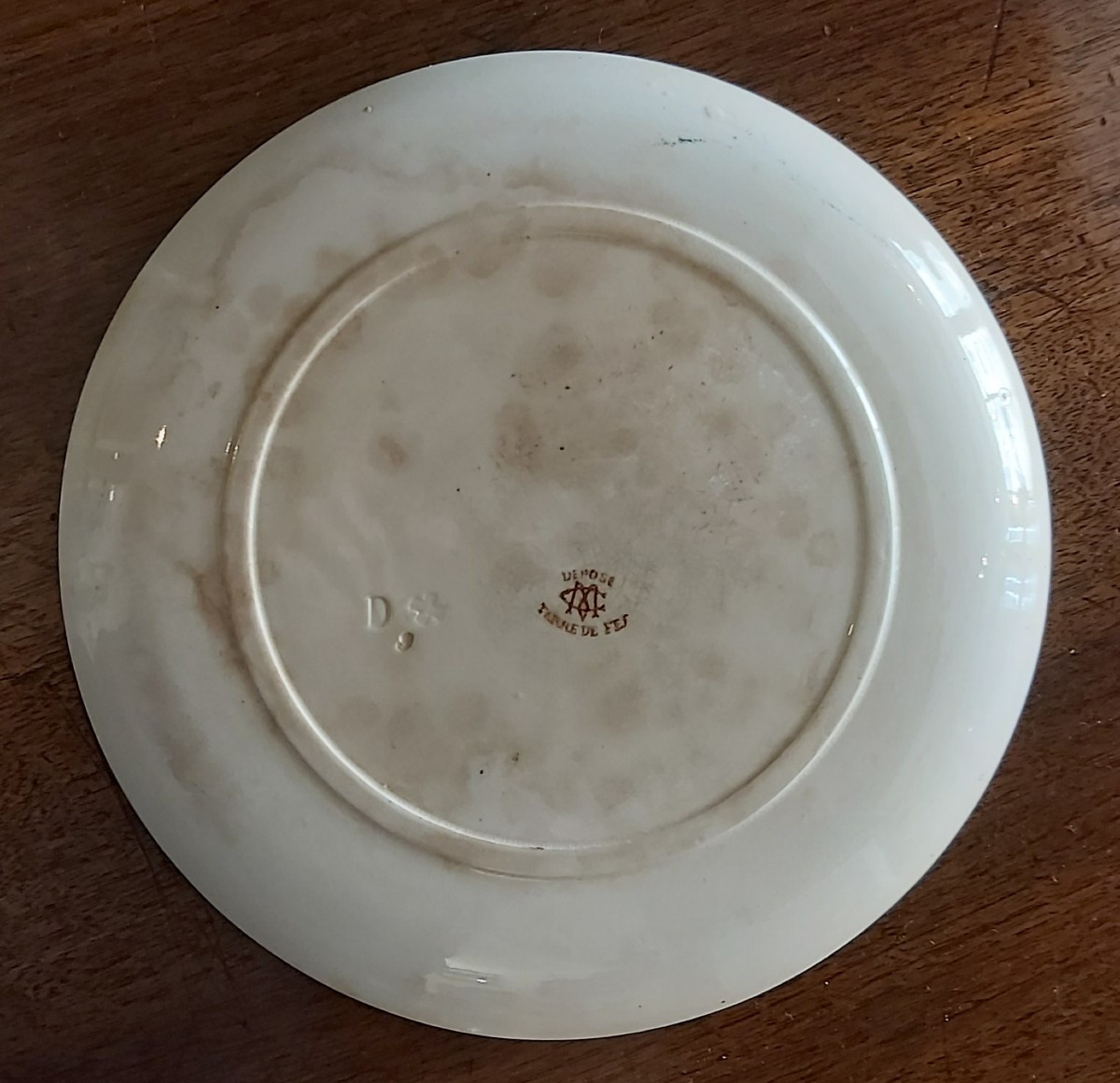
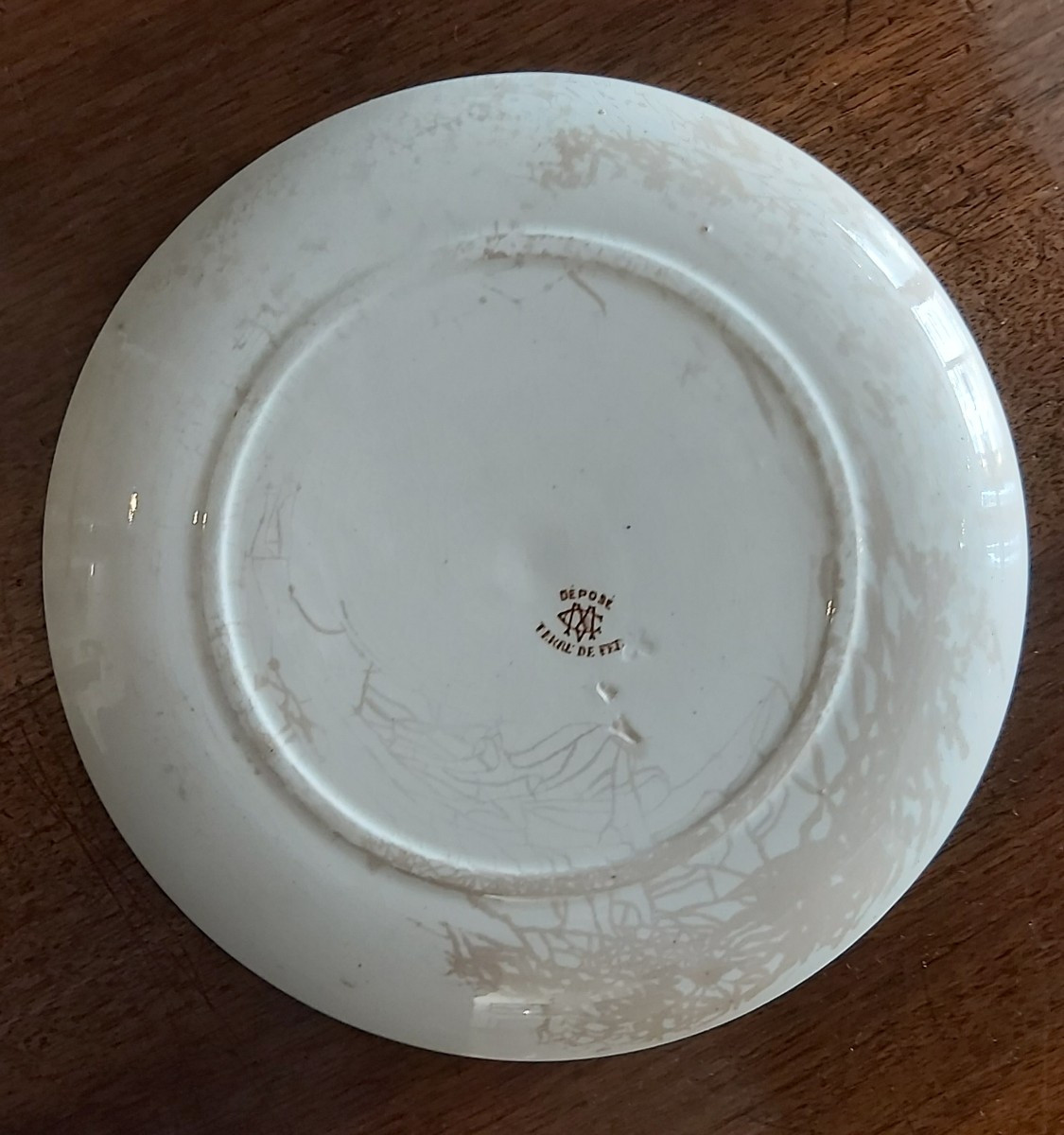
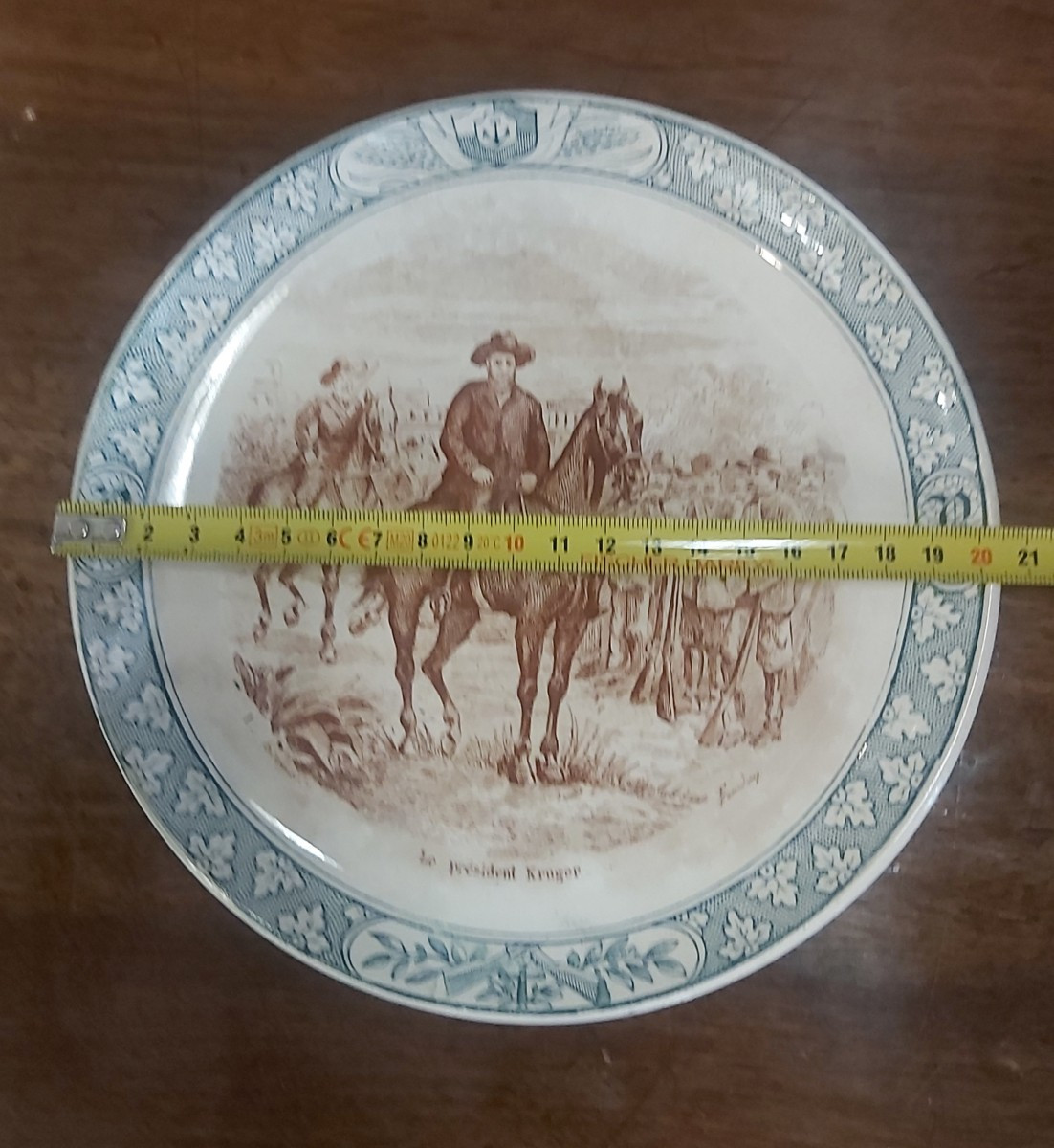











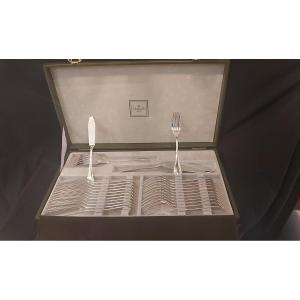



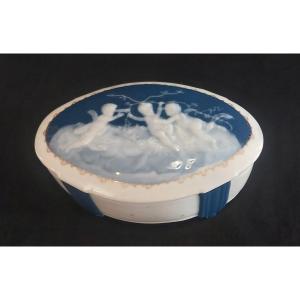



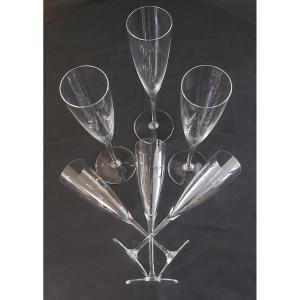

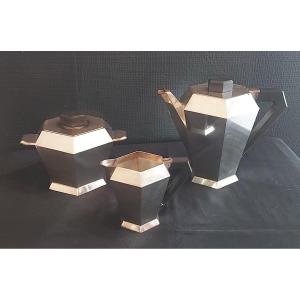

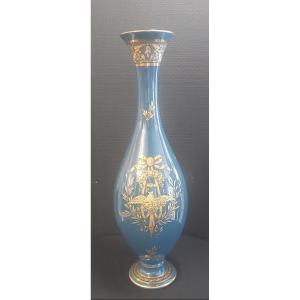










 Le Magazine de PROANTIC
Le Magazine de PROANTIC TRÉSORS Magazine
TRÉSORS Magazine Rivista Artiquariato
Rivista Artiquariato